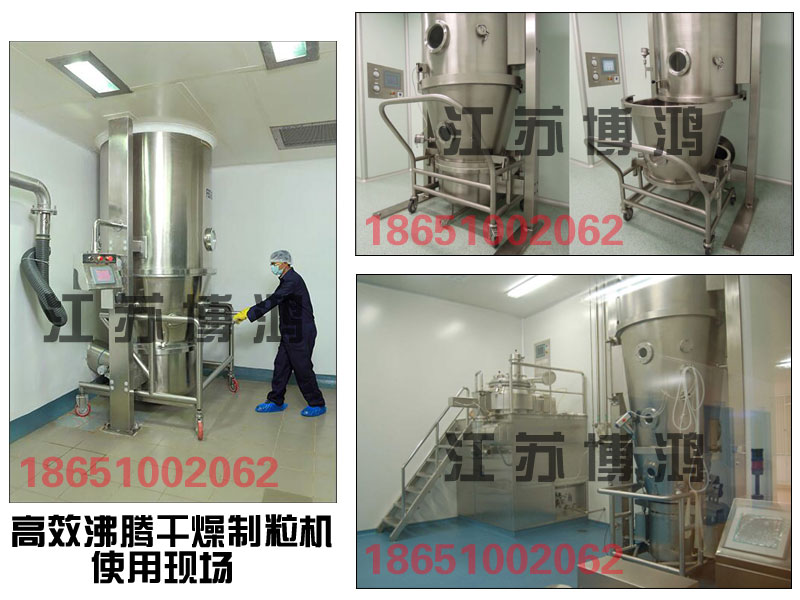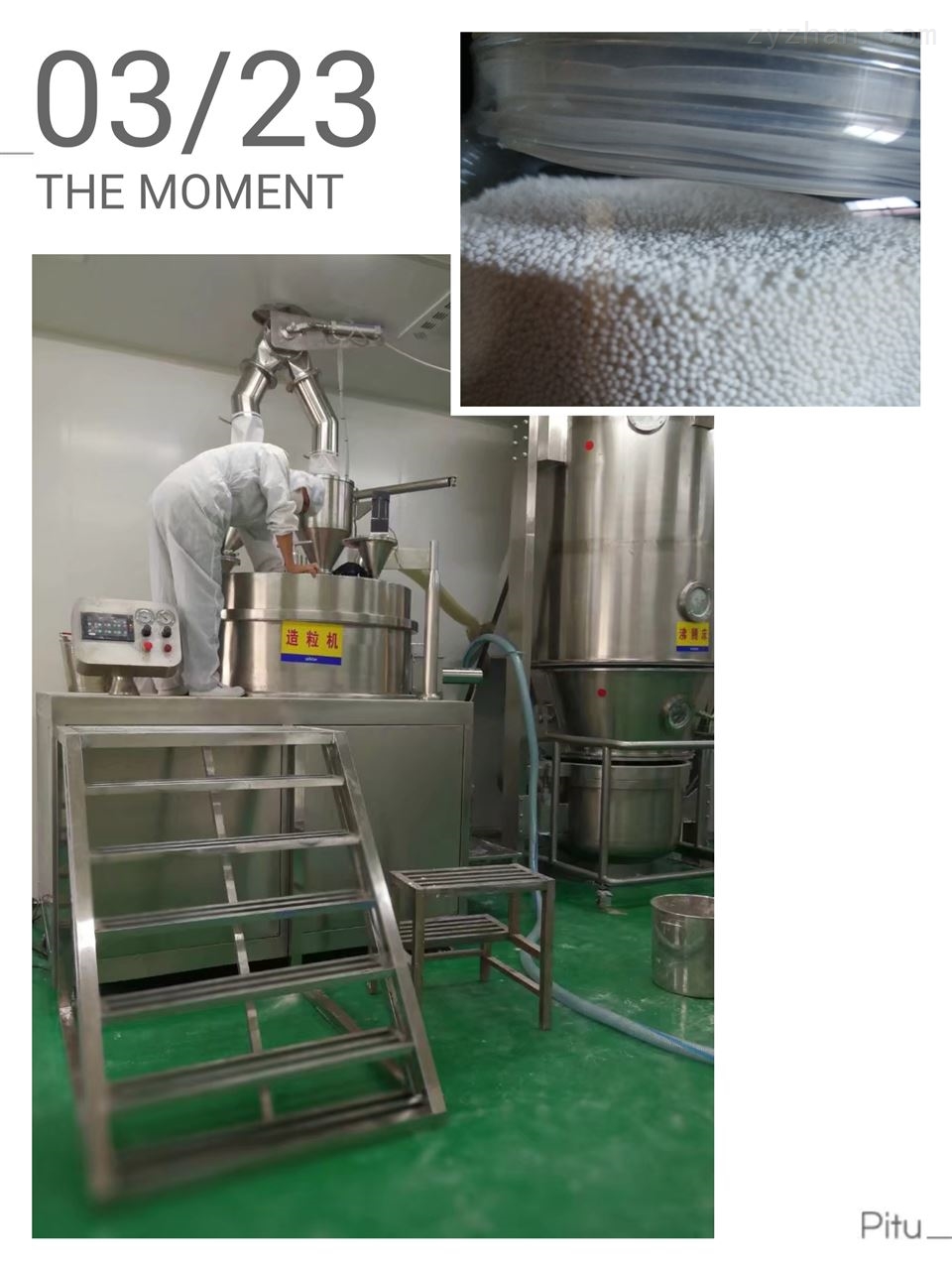I. Phytase coated pellets - an overview
Phytase coated pellets and preparation method thereof, comprising an enzyme-containing pellet core and a coating layer coated on an enzyme-containing pellet core, wherein the enzyme-containing pellet core comprises phytase, starch, microcrystalline cellulose, calcium carbonate Sodium sulphate, ammonium chloride, corn syrup dry powder and Tween 80; the coating layer consists of polyacrylic resin, hydroxypropyl methylcellulose, hydrogenated oil, talc, dextrin. The phytase coated pellets of the invention have round appearance and uniform particle size, and the particles of 20-40 mesh size account for more than 99%, and the bulk density is 800 g/L to 900 g/L, which has good mixing uniformity with the feed.
Phytase is an enzyme that can hydrolyze phytic acid, which can degrade phytic acid phosphorus into inositol and phosphoric acid, thereby reducing the addition of inorganic phosphorus such as calcium hydrogen phosphate in feed, and greatly reducing the phosphorus content in livestock manure. .

2, phytase coated pellets - preparation process
Jiangsu Bohong provides phytase coated pellets and a preparation method thereof, and the stability and heat resistance of the phytase coated pellets are superior to the existing similar products, and the production cost is low. The phytase coated pellet comprises an enzyme-containing pellet core and a coating layer coated on the enzyme-containing pellet core, wherein the enzyme-containing pellet core is composed of phytase, starch, microcrystalline cellulose, calcium carbonate, sodium sulfate, It is composed of ammonium chloride, corn syrup dry powder and Tween 80; the coating layer is composed of polyacrylic resin, hydroxypropyl methylcellulose, hydrogenated oil, talc, and dextrin.
A method for preparing a phytase coated pellet comprises the following steps:
(1) Preparation of wet materials: Weigh the components of the enzyme-containing pellet core in proportion, and mix them into a mixer to form a wet material;
(2) Extrusion: the prepared wet material is placed in the extruder silo, and the extrusion pore diameter of the extruder orifice plate is adjusted to be 0.3 mm to 1.0 mm, and the wet material is extruded into a thin strip shape;
(3) spheronization: the thin strip material extruded by the extruder is fed into the spheronizing machine, and the rotation speed of the spheronizing machine is adjusted to 600~100 rpm, until the strip material is processed into round and uniform pellets and discharged;
(4) Drying: the pellet-containing enzyme-containing granules are put into a fluidized bed, and the inlet air temperature is adjusted to 40 ° C to 70 ° C, and dried until the material temperature is 35 ° C to 65 ° C, that is, the enzyme-containing pellet core is obtained. ;
(5) coating: the components of the coating layer are weighed in proportion, and slowly dissolved in dichloromethane under stirring to prepare a coating liquid having a mass to volume ratio of 20% to 30%; further, taking The appropriate amount of enzyme-containing pellet core is fed into the bottom jet fluidized bed coating machine, and the bottom jet fluidized bed coating machine and the coating equipment are started, and the inlet air temperature is adjusted to 55 ° C to 70 ° C, and the atomization pressure is 1.5 kg to 2.5. Kg, the coating liquid is evenly sprayed on the pellet core by the bottom spray fluidized bed. After the coating liquid is consumed, the drying is continued until the material temperature reaches 35 V~65 °C, that is, the phytase coated pellets are obtained.
The phytase coated pellets have a round appearance and uniform particle size, and the particles of 20 to 40 mesh size account for more than 99%, and the bulk density is 800 g/L to 900 g/L, which has good mixing uniformity with the feed. The phytase coated pellets have good stability and are stored at 25 ° C for 6 months at room temperature, and the enzyme activity loss is about 3% -5%.
The phytase coated pellets have good heat resistance, and can still reach 92%~95% in the condition of feed tempering temperature of 85 ° C or more, tempering time of 18 to 40 seconds, and steam pressure of 0.6 to 0.7 MPa. The rate is higher than the existing similar products, which is beneficial to the promotion and application of phytase in feed.
In the preparation method of the phytase coated micropellets, the inlet air temperature is lower than the existing process, the enzyme activity loss of the phytase in the preparation process is reduced, the production cost is saved, and the energy consumption is reduced. The addition of hydrogenated oil to the coating layer can significantly improve the heat resistance of the phytase-coated pellets, thereby facilitating the popularization and application of phytase in the feed industry.
As feed mills increasingly use high-temperature short-time processing equipment, it is easy to lose the activity of the added phytase in the feed, resulting in reduced effectiveness, which is the limiting factor for the promotion and application of phytase in feed. One. In order to reduce the loss of phytase added to pellet feed due to feed processing, improving the heat resistance of phytase has become an important task in phytase research. The micro-pill coating technology is used to granulate the phytase and then coated with a coating technique. Since a small environment created by human beings is isolated from the outside to a certain extent, the heat resistance of the encapsulated phytase is increased. Raise, this is a realistic way to solve the problem of phytase heat resistance. In addition, the pelletized product treated with granulation and coating has reduced dust when used, has better mixing uniformity in feed, and has better stability in storage and transportation.




